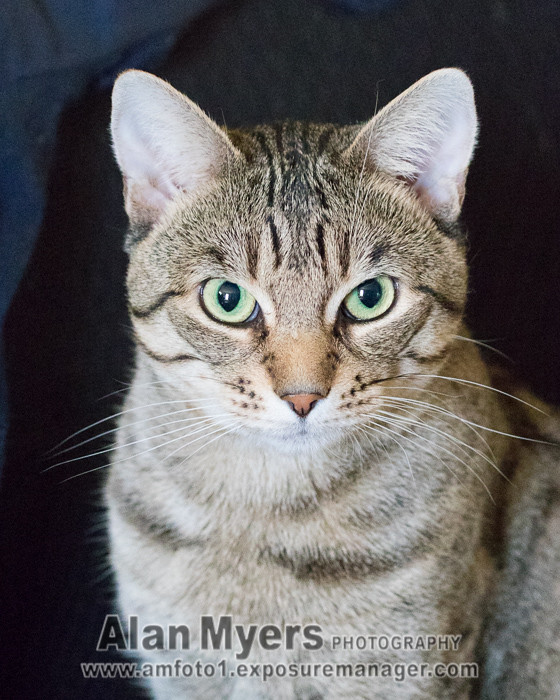Lens Help
Mar 25, 2018 13:52:54 #
Jakebrake wrote:
Oops, also forgot to mention I have the Tamron 70-200 f/2.8 Di VC and love it too. If you can afford it, you should get them both, and from your post those two great lenses would cover 98% of your shooting situations. I also purchased this lens through Greentoe and fulfilled by one of the East Coast big boys at a substantial savings as well. Being an amateur like you, these are my most used lenses. Some examples of the Tamron 70-200 SOOC with the exception of the last one.
Thank you for posting examples with the 70-200 Tami I am considering this lens as the cost is much less than the canon
Mar 25, 2018 14:39:47 #
amfoto1 wrote:
For stage lighting, I prefer to use prime lenses..... (show quote)
Alan,
I hadn’t thought about the Prime lens but I kind of like the idea as I noticed looking through my pics from last year that alot of them were +/- 5 of 85mm and I like the even faster speed. Oh and the price is great. This is definitely a good option.
I hear you on the 16-300 and that is why I am looking to expand. To be honest, it was a really good “starter” lens for me as I was learning how to use the camera but ready to upgrade.
Thanks to you and everyone for all the suggestions.
Mar 25, 2018 23:16:53 #
Buckeye Bob wrote:
First post here but would love some help. I am de... (show quote)
Look for a 35mm f1.8
Mar 25, 2018 23:31:56 #
ecurb1105 wrote:
Look for a 35mm f1.8
If you decide on a 35mm prime, the Canon EF 35mm f2 is one of Canon’s sharpest lenses and not (comparatively) expensive.
Mar 26, 2018 00:10:19 #
mwsilvers
Loc: Central New Jersey
TriX wrote:
If you decide on a 35mm prime, the Canon EF 35mm f2 is one of Canon’s sharpest lenses and not (comparatively) expensive.
If you mean the IS USM version, its my personal favorite lens. Its on my camera more than all my other lenses put together. It's such an efficient light gatherer that in DXOMark tests it has a tStop of 2. TStops are a measure of light transmission and in the best cases the tStop will equal the widest aperture. Most lenses, even the best primes, have tStop values that don't match the widest aperture. Most f/1.8 prime lenses have a tStop of 2.1 or 2.2 or more, which means the Canon EF 35mm f/2 IS USM actual lets in more light then some faster lenses. A perfect example is the very good Tamron SP 35mm F1.8 Di VC lens which has a tStop of close to 2.5, which is a whole stop of light less than its maximum aperture would suggest. So, if low light performance is important the tStop measurement says more about the lens' low light performance than the how wide the aperture is.
Mar 26, 2018 00:12:51 #
mwsilvers wrote:
If you mean the IS USM version, its my personal fa... (show quote)
Yep, it is an impressive lens and the next one I intend to add to my inventory.
Mar 26, 2018 00:15:46 #
mwsilvers
Loc: Central New Jersey
TriX wrote:
Yep, it is an impressive lens and the next one I intend to add to my inventory.
Yep, I've had mine for over 2 years and love it. BTW, when my wife retires in 3 more years we're moving to your neck of the woods.
Mar 26, 2018 00:31:06 #
mwsilvers wrote:
Yep, I've had mine for over 2 years and love it. BTW, when my wife retires in 3 more years we're moving to your neck of the woods.
Come on down!
Mar 26, 2018 09:51:47 #
TriX wrote:
If you decide on a 35mm prime, the Canon EF 35mm f2 is one of Canon’s sharpest lenses and not (comparatively) expensive.
Yes, that lens compares very favorably to lenses costing 3X what it sells for, not as impressive looking on the camera as the L lens or the Sigma Art, but performance to dollars spent by far it is one of the best values you can find in lenses for Canon cameras.
Mar 26, 2018 10:43:13 #
mwsilvers
Loc: Central New Jersey
Blurryeyed wrote:
Yes, that lens compares very favorably to lenses costing 3X what it sells for, not as impressive looking on the camera as the L lens or the Sigma Art, but performance to dollars spent by far it is one of the best values you can find in lenses for Canon cameras.
Yep, it is a hidden treasure. It may have a less impressive looking build than some of its competition, but it is a superior optic at its price point.
If you want to reply, then register here. Registration is free and your account is created instantly, so you can post right away.




